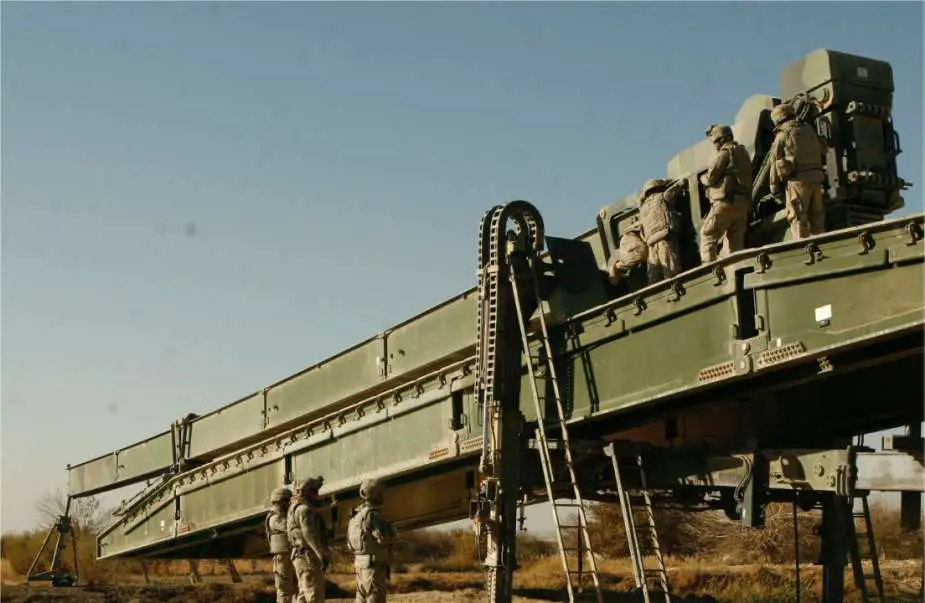UK signs contract with KNDS for bridging equipment modernization
The United Kingdom's Ministry of Defence has embarked on modernizing its engineering units' bridging equipment by signing a contract with the Franco-German company KNDS. This acquisition is part of the "Tyro" project, which aims to replace the heavy BR90 bridge systems used by the Royal Engineers.
Follow Army Recognition on Google News at this link

KNDS' new 46-meter-long modular DSB bridging equipment (Picture source: KNDS)
The new bridging system will be installed on German MAN HX2 trucks, a principal type of truck used in the British Army. KNDS's new 46-meter-long modular DSB bridging equipment will enhance capabilities for use with the new British Challenger 3 tanks.
Valued at 150 million British pounds, the contract aims to improve the compatibility of the British Army's bridge layers with other NATO allies. Besides the United Kingdom, the DSB modular bridge system based on the MAN HX2 10*10 truck is also used by Australia, Germany, the Philippines, and Turkey.
The use of a modular bridging system, like those developed by KNDS and other defense companies, holds significant strategic importance in the context of a potential conflict with Russia. In such scenarios, the mobility and flexibility of armed forces are crucial. Russia, with its vast territory, presents unique geographical challenges, particularly in terms of crossing rivers, streams, and other natural obstacles. Bridging systems allow military forces to maintain mobility and operational momentum in environments where civilian infrastructure is either absent or destroyed.
Moreover, the unpredictable nature of contemporary conflicts demands constant speed and adaptability. Modular bridging systems meet this need by enabling the rapid and efficient deployment of temporary structures to pass troops, armored vehicles, and even heavy tanks. This capability is especially vital given Russia's diverse infrastructure, where existing bridges may not support the weight or volume of Western military equipment.
In the context of hybrid and electronic warfare, where communication and transport infrastructures can be targeted, the ability to rapidly deploy makeshift bridges becomes a strategic asset. It not only preserves lines of communication and logistics but also allows for surprising the adversary with quick and unexpected movements.
Finally, bridging systems play an essential role in humanitarian and relief operations during the war. They facilitate the delivery of aid, secure evacuation routes for civilians, and establish humanitarian corridors. Thus, their use extends beyond the purely military framework and is part of a broader strategy for conflict management, where the protection of civilian populations and the preservation of infrastructures are paramount.
This announcement echoes another: the Finnish Defence Forces' Logistics Command signed an agreement with Patria to produce new Leopard 2L bridge-laying machines. Under this agreement, the Finnish Defence Forces will receive six new tracked bridge-laying machines with the Leguan modular bridge system, featuring bridges of various lengths. The bridge system will be installed on the main battle tank Leopard 2A4, which will undergo a corresponding modernization process at Patria's facility.
The total value of the agreement is approximately 23.6 million euros, accounting for additional equipment for machine repair, documentation, and initial technical support.
- Hits: 2295
















